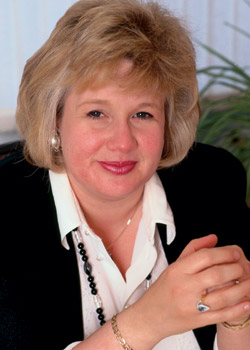Epos-sibility

Epos has come a long way in the last 10 years. The technology keeps getting better, providing even more functionality and benefits for your business.
12 March 2009
Epos systems have advanced enormously over the past decade, to the extent that their wide-ranging functionality means they now play an essential role in the running of many retail businesses. “Originally designed to address issues such as shrinkage, stock management, labour overheads, and customer service, Epos systems now can not only deal with stock outs and over stocking, but can identify purchasing patterns, interface with supplier systems enabling electronic ordering, enhance customer service, and do much more,” says Con Loy of Ioresource.
But with modern Epos systems being able to deliver so much, retailers are keen to ensure they capitalise on this and deploy an application that delivers maximum benefits. In the current economic climate, a system that offers ‘value for money’ and allows retailers to future-proof their business as far as possible has never been so vital.
“Cost of ownership both in terms of purchase price and maintenance costs is taking on greater importance for retailers of all sizes and in particular small to medium sized retailers,” confirms Annette Tarlton, marketing director at Star Micronics EMEA.

Annette Tarlton, marketing director at Star Micronics EMEA

Annette Tarlton, marketing director at Star Micronics EMEA
Securing maximum efficiency
One way for businesses to avoid higher costs over a longer period is to choose hardware that will grow with them and provide support for a wide selection of platforms and printer drivers. Tarlton points out that Star printers provide ‘intuitive’ installation software for several Microsoft applications, and are compatible with Apple MAC, Linux and JavaPOS.
She believes one of the most relevant areas of development in recent years has been in POS printers. “Whilst adding logos and graphics to receipts has always been possible, it has not been easy and customers have been unwilling to change their current POS setup for just this feature. Star has introduced software that will work over and above the retailer’s current software without affecting its performance.”
Profit-making software can also allow retailers to increase their marketing capabilities at a minimal cost. For example, software with the TSP100 futurePRNT series can create word-triggered coupons for focused advertising campaigns. “If a customer purchases a shampoo the printer can automatically produce a coupon offering a discount on a related hair care product; all at no extra cost and without the need for any software changes. Retailers of all sizes, can now change the look of their receipts in a matter of minutes giving them the flexibility to quickly address seasonal or stock situations,” says Tarlton.
Increasingly, products have more comprehensive detailed barcodes that need to be printed clearly in order to be easily read by a scanner. “With its double density mode the TSP700II from Star Micronics can print 2D barcodes in a higher resolution than traditional POS printers while at the same time offering high speed (250mm/second) and reliability,” she adds.
And while she thinks that, “Ethernet is without doubt the connection method of choice for many IT managers in retail environments requiring high speed, long distance and reliable communication; “to date, this extremely flexible means of communication has come at a high cost.” Star has therefore developed “the world’s first low cost Ethernet printer, TSP100LAN futurePRNT.” It also recently launched the first dedicated entry-level powered USB printer offering retailers the advantages of a combined power supply and interface.
Another consideration, particularly for larger retailers, is whether their application can allow mass system installations for printers. Tarlton says, “Unlike other POS printers available today all the printer and futurePRNT software settings including logos, coupons and auto-text reversal for vertical use etc can be easily pre-set using the included intuitive configuration software. These settings can then be distributed as an xml file to all relevant PCs for mass system installations thus eliminating the need to configure each individual printer. As a result, this reduces the need for technical visits should any problems occur. A new printer can simply be taken out of the box by the retailer to replace the faulty printer.”
Achieving solid ROI
Adrian Devine, managing director of Leaders Enterprises Ltd (Leaders) also emphasises the importance of Epos suppliers providing good support. “It is paramount that the customer has a service provider that knows and understands their needs. The product should be tailored to address the retailer’s requirements, and the retailer should be able to rely on their Epos system. Best of breed tier one technology will provide high reliability for retailers over the next few years.”
In December, Leaders received the ShelfLife C-store award for best technology application 2008 for its SAMforWIN application. A good Epos application, such as this can offer a number of advantages which Devine outlines.
It can help retailers “understand their margins on a daily basis. The reporting tools incorporated into the system can highlight the products sold yesterday and the margin on those products.”
The system can also formulate the price for goods according to a certain margin and help retailers “ensure they have the right price for their customers which in turn will increase their profits.” Through reports, the retailer can also see if there has been a fall in the sale of certain goods. Again this is another way in which Epos can assist retailers to “measure their store’s performance through key performance indicators (KPI).”
Staff can also make price changes on their tills and update shelf-edge labels centrally, which is another way in which their Epos system can boost efficiency. Also, Devine believes a good Epos application can enable a retailer to provide much better customer service. If say, a product doesn’t scan automatically, the price can be imported at the till from the franchisee’s database; providing a quicker service.
“What people are increasingly looking at,” he adds, “is managing their business from end to end with the aid of their Epos. They can therefore see very successful results and an impressive return on investment (ROI).”
Changing times
Conn Loy, director of Ioresource Ltd outlines recent developments which could achieve worthwhile ROI. He reckons touch systems such as CarrollTouch (Infra Red) and Intellitouch (Surface Wave) are set to be superceded by Accoustic Pulse Recognition (APR), which was introduced by Elo in 2007. “The chief benefits of APR over resistive technology is that there is no plastic membrane to wear out – you are touching on glass – and the technology costs the same as the current Elo Accutouch, so the total cost of deploying a solution based on APR is much lower than more traditional solutions. It is expected that APR based solutions will account for at least 50% of the global market by 2015.”
During the last 18 months a number of manufacturers have introduced fixed position imagers as their latest innovation. Imagers operate quite differently from scanners and are more akin to the cameras commonly featured on mobile phones. As such they need to “focus” in order to capture the data and a perception can arise that they are slower to scan than traditional scanners when attempting to decode some barcodes.
However they do have other benefits, such as capturing images in camera mode and potentially utilising ‘optical character recognition’, but adds Loy, “these features are quite niche and most POS applications don’t have a requirement for them. The key advantages of imagers is that they will scan 2D barcodes and are based on solid state technology, with no moving parts. The reality is that the market has been slow to adopt these devices as 2D codes don’t have any significant presence at the point of service and performance of the technology remains inferior to laser technology in core environments.”
In general, he finds though “at the moment there is real temptation to buy the cheapest offering that you can find. However if the Epos system is regarded as an investment, it will be necessary to evaluate running costs, maintenance, life expectancy, upgradibility, and finally, local support and service utility.”
Promoting loyalty
Doug Hargrove, chief marketing officer of Torex, states: “POS systems can be integrated with the latest loyalty technology to create, track and maximise in-store promotions. Card-based loyalty systems make redeeming offers at the checkout as easy as possible for shoppers, eschewing cumbersome voucher-based systems. New POS technology also allows a retailer to collect useful information about the uptake of promotions, and valuable data about shopping habits.
“Another innovation that can improve the in-store experience is the use of mobile POS technology. Wireless readers equipped with chip and pin technology now allow transactions to be processed around the store, enabling staff to reduce queuing times.
“Added to this, touch-and-go card payment systems can improve the shopping experience by significantly reducing the time it takes to process transactions. Instead of having to place their card in a terminal and wait to enter their PIN, customers can pay for their shopping in the time it takes to simply wave their card across a reader.”
Hargrove says retailers should also consider the following benefits of advanced POS systems.
- “Reducing theft: With rising crime rates traditionally linked to recession, store owners will be interested to hear of the control POS technology can give them over shrinkage, both internal and external. Torex can combine CCTV and POS scanning to give stores a visual record of each transaction, with details of the scanned item superimposed on the screen. CCTV technology can also help stores comply with age-related sales regulations. Not only do the screens prompt staff to challenge potential under-age purchasers, but [offer] recording and transaction details.
- “Payment security: Systems providers such as Torex are able to work with Qualified Security Assessors to ensure that their POS technology is secure against data leaks, and can save store owners time and money by offering automatic updates to meet the latest version of the PCI DSS standards.
- “Reduced environmental impact: Recent years have seen a significant rise in consumer awareness of the environmental impact of their shopping habits and the business activities of the stores they visit, leading to a shift in purchasing behaviour. With waste management controls in modern POS systems, retailers can also keep track of the environmental impact of each product they sell. They can record factors such as the quantity of materials used in packaging, whether those materials can be recycled or are biodegradable, and the carbon footprint involved in producing and shipping them.”
Modern POS systems allow small retailers to give their customers the option of paying by a number of methods, and accept money-off coupons and even implement loyalty scheme cards. Local stores can therefore offer the same standard of customer service as larger retailers, but with a “personal, localised touch.”
Gaining widespread functionality
Dominic Feeney, systems director of CBE, agrees there has been a lot of activity over the last 12 months in the area of loyalty. “We provide various loyalty solutions to our retailers which they can customise to suit their business needs. This allows the retailer to compete with the multiples and retain his customer base.”
To future-proof their business, he adds: “Ideally a retailer should be looking for a solution from a company with a proven track record in software development and after sales service. This helps ensure that retailers will have access to software enhancements and legislative changes.
“The total cost of ownership of a system over a five to seven year lifetime needs to be looked at when making a decision. It is vital that the retailer considers the support they will receive and the availability of updates and enhancements for the system over its lifetime.”
And in order to reap the maximum reward from their Epos, he says: “The retailer should look at what they are doing manually on a daily and weekly basis and then talk to their Epos supplier to see how much of this is available as automated processes in their existing system. The vast majority of retailers will be surprised at the functionality available to them that they are not using. Some Epos suppliers provide cluster training sessions to their retailers on a regular basis and these can also be very useful.”
He notes retailers are also increasingly requesting functions such as total integration with third party services, live link from handheld terminal and live stock.
Service support is another top priority. “Retailers need to check the service reputation of the Epos provider, find out what is offered in terms of after-hours support, what is covered at weekends, what is the response time to calls and what is covered in an emergency situation; does the Epos provider have their own technicians or do they use a third party to provide on-site cover?”
Boosting environmental credentials
Celine Hackett, managing director of PC Cubed, predicts green Epos will assume increasing importance in the current climate. Such an application “reduces electric costs greatly over a year period. Consumers are also increasingly behaving in an environmentally friendly manner and it is important retailers are able to show them they are taking this into consideration.”
New Epos can also cover any recent Irish and EU legislation in the retailing sector. For example, Epos can help retailers monitor and track the collection of batteries. “Everything is controlled and reported on, so the business is as efficient as possible,” says Hackett.
“A good Epos system can greatly enhance the speed of information to retailers, reduce queues and improve through-put. Retailers can also greatly improve their intelligence on customers’ buying spend and power. They can see what their best lines are and where those are placed in-store.
“Information is king within retail. Epos software can provide information on where the business is going and profitability. It also helps control costs and identify any areas where there may be cost leakages. Also, by increasingly integrating back office and front of shop functions, Epos can help the business achieve maximum efficiency.” She concludes on a most valid point: “This means retailers have more time to steer their business, which is even more crucial in the current economic climate.”
Self service: a c-store solution?
Adrian Devine, managing director of Leaders believes the self check-out concept is set to expand in Ireland. “It has been proven in the UK, Europe and USA that the consumer has embraced the technology.”
Conn Loy of Ioresource agrees, noting, “Epos self service will happen, it is just a question of when.” However he adds, “Although the profile of self service has increased, and it is certainly a hot topic, very few integrators have managed to provide a real solution for Epos transaction processing outside of the tier one market where the NCR Fastlane solution is popular.
“The real challenge for solutions providers is the delivery of a self checkout solution for the convenience and forecourt store sector. Retailers in this area need the core functionality of a Fastlane type solution but cannot allocate the same amount of space or budget as tier one retailers.
“Drive-offs are an issue in the forecourt sector so the solution requires features that verify that the barcode scanned equates to the goods being processed, that all goods are scanned and, if necessary any fuel purchases are paid for. The actual location of the self service till is also a critical factor. It must be positioned in-store so it is easy to access, monitor, control and have sufficient profile that shoppers will actually use it over a normal till.”
Dominic Feeney of CBE adds, “Our biggest development for the retail sector over the last 12 months has been in the area of self service checkout; we are the first Epos company that can offer this to independent and franchise retailers. We have just installed the first four lane system in a supermarket and so far the reaction is extremely positive.”



 Print
Print






Fans 0
Followers